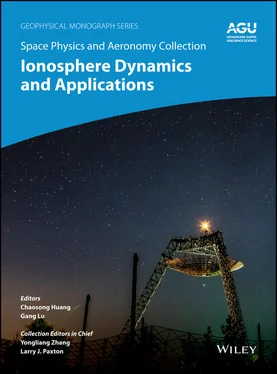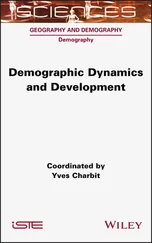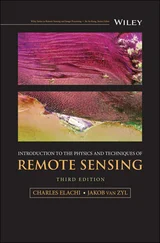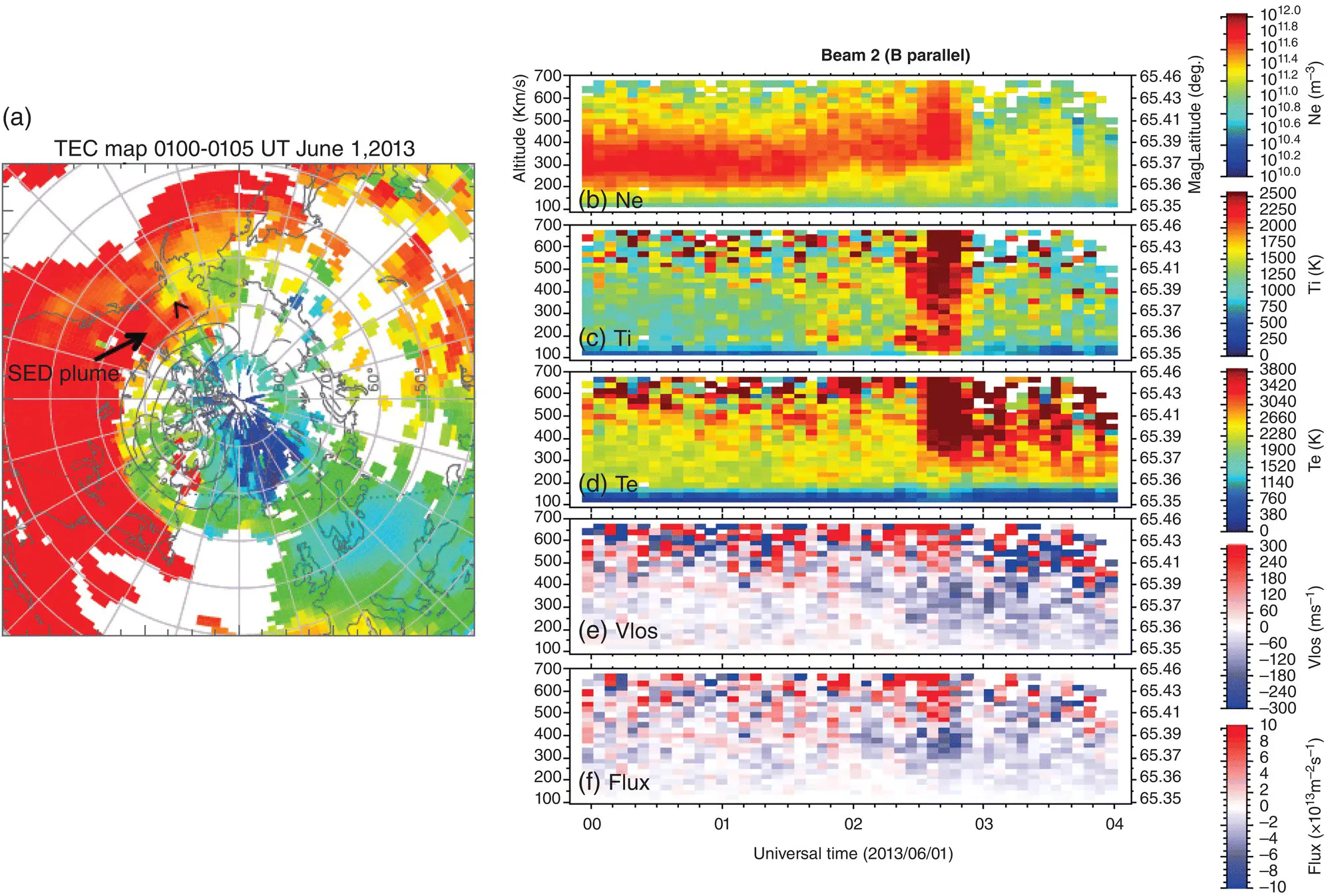
Figure 4.7 (a) TEC map at 0100 UT on 1 June 2013 shows the extension of SED plume into the Alaska sector. The black segments highlight the field of view of the PFISR radar. (b)–(f) PFISR field‐aligned beam observation of the density, ion temperature, electron temperature, field‐aligned velocity, and flux. Divergent plasma fluxes are seen within the SED plume when the open‐closed boundary moved across the beam
(from Zou et al., 2017b; Reproduced with permission of John Wiley and Sons).
Besides the effect of soft electron precipitation, Zhang et al. (2016b) also reported ion upflow events in the polar cap patch due to enhanced frictional heating, that is, the type‐1 ion upflow defined in Wahlund et al. (1992), using DMSP satellite. In a subsequent study based on an extended DMSP database, Ma et al. (2018) found that the highest upflow occurrence rate was associated with hot patches, which are accompanied with particle precipitation, strong convection speed, and localized FACs.
Cold plasma of ionosphere origin has indeed been observed at very high altitude. For instance, Foster et al. (2014) described in situ observations of locally enhanced cold plasma density at the ~5 Re altitude of the Van Allen Probes RBSP‐A spacecraft on magnetic field lines mapping to the point where the TOI intersected the midnight auroral oval as seen in GPS TEC imagery. Similarly, Walsh et al. (2014) reported THEMIS observations at ~12 Re altitude of enhanced cold plasma density on reconnecting dayside field lines mapping to the point where the SED plume entered the polar cap at the noontime cusp. These observations suggest that the density enhancements seen as the SED plumes and TOI at ionospheric heights could extend to very high altitudes along magnetospheric and polar cap field lines. In addition to the direct contribution of ion upflows/outflows from the cusp to the dayside reconnection site, cold plasma of the plasmaspheric plume origin has also been observed in the reconnection region (Lee et al., 2016).
The subsequent impact of the large but intermittent ion upflow/outflow fluxes associated with polar cap patches and TOI on magnetospheric dynamics is of great interest but outside the scope of this chapter and thus will not be elaborated here. Future quantitative studies using numerical models are needed to further distinguish the classical cold and the newly identified hot patches, such as whether the classical patch evolves into the hot patch under the influence of particle precipitation and FACs, or these hot patches can be produced solely by particle precipitation.
4.6 OPTICAL EMISSION MECHANISMS AND VARIABILITY OF POLAR CAP PATCHES
Polar cap patches are traditionally defined by plasma density enhancement and thus typically observed by LEO satellite or remotely sensed by ground‐based radars, but they can also be observed using optical instruments, such as 630 nm red line all‐sky imagers. The classical nighttime source for generating O( 1D) is through dissociative recombination:
(4.1) 
This process is negligible in the sunlit atmosphere. The volume emission rate due to dissociative recombination in the absence of precipitating particles based on Link and Cogger (1988) is
(4.2) 
The β 1is the metastable yield of nightglow production reaction described by equation ( 4.2), and k 1, k 3, k 4, k 5are the rate coefficients. The k 1and k 5depend on ion and electron temperature, respectively, while k 3and k 4depend on neutral temperature. β 1is either 1.1 (Link et al., 1981) or 1.3 (Sobral et al., 1993). A 1Dis the transition coefficient for A 630nmand A 636.4nmand equals 7.45x10 ‐3(Hays et al., 1978).
As one can see from the equations above, the patch luminosity depends on the altitude distribution of the electron density and also the neutral atmosphere property. It emits redline as it recombines. Therefore, its luminosity variation provides clues to some extent for the internal plasma dynamic processes. Hosokawa et al. (2011) used all‐sky imager at Resolute Bay to study patches, and found that the patch emission height should be around 295 km and not the 235 km obtained from the MSIS‐E90 and IRI‐2007 models, which highlight the deficiencies of these models in the polar region. They found that the e‐folding time of the patch decay can change from 1 hour to 4 hours for altitudes of 250 km and 290 km, respectively, due to charge exchange and recombination with molecular species. Therefore, characteristics of the polar cap patches, such as altitude profiles of electron density, are critical for the understanding of the ion‐neutral interactions within the patch, but they are often unknown because of a lack of continuous measurements deep in the polar cap. In fact, the ambiguity of the emission height introduced to the luminosity calculation has been realized before. Sojka et al. (1997) quantitatively estimated the effect of various density distribution vertically, and found that the patch emission can change as much as 400 R, when the F‐region peak height reduces from 360 km to 300 km.
Recently, Perry et al. (2013) also found that the luminosity could change up to a factor of 2 or more, when enhanced ExB convection leads to descending motion of the F‐region ionosphere, and the timescales for the emission variations are on the order of 10 to 20 min. Figure 4.8displays a chart from the Perry et al. (2013) study showing the time (in seconds) needed for a patch's luminosity to decrease to 60% of its initial value and the ratio of the maximum luminosity versus its initial value as a function of vertical drift speed and of the neutral density at 250 km altitude (expressed as ratio). They further suggested the possibility of using changes in patches intensity to monitor the vertical motions of patches and possibly even their vertical position.
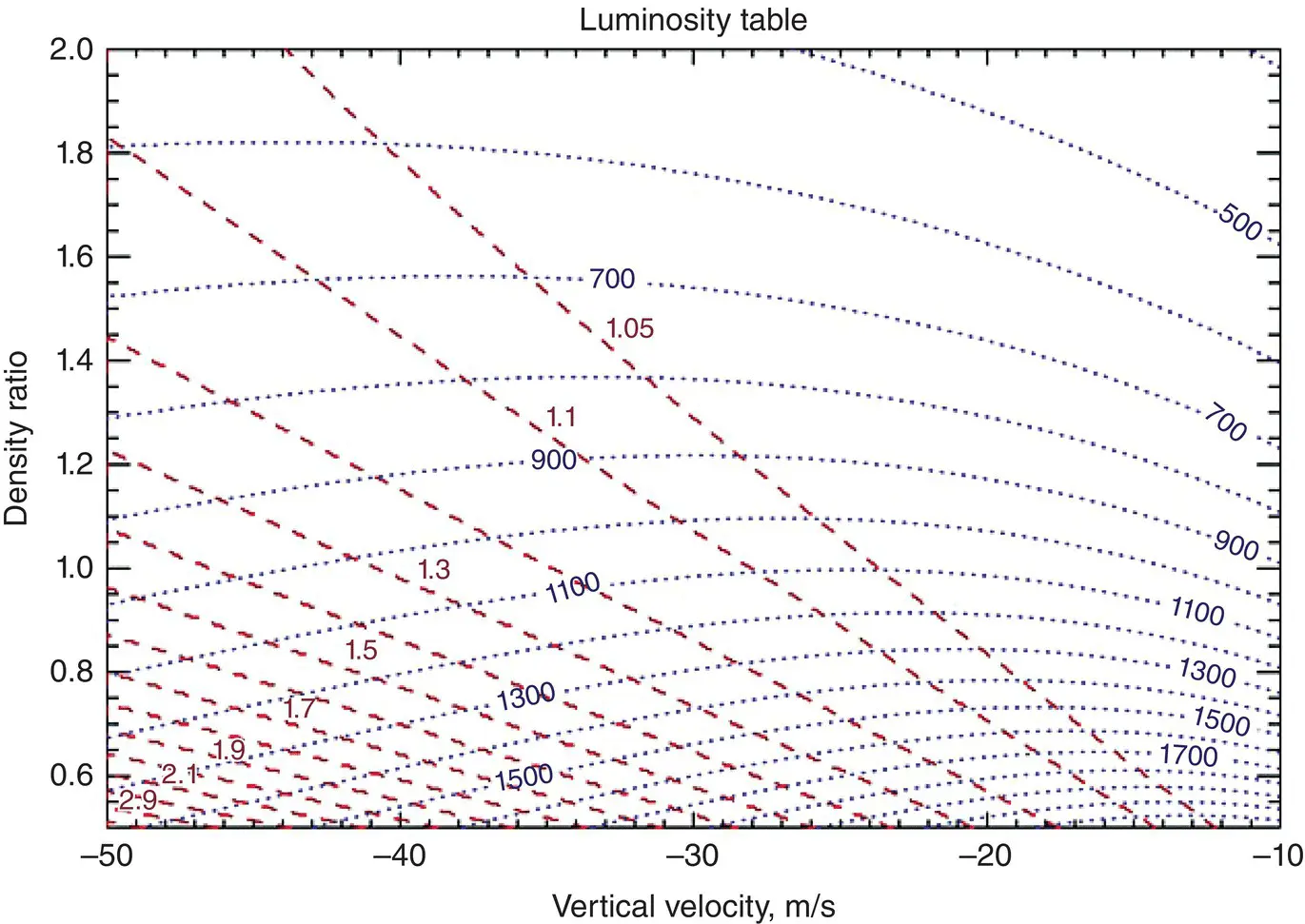
Figure 4.8 Chart of the time, in s, taken to go down to 60% of the initial luminosity (blue contours) and of the ratio of the maximum luminosity to the starting luminosity (red contours) as a function of vertical drift (horizontal axis) and of the ratio of the starting density to the density (vertical axis)
(from Perry et al., 2013; Reproduced with permission of John Wiley and Sons).
Besides the classical recombination‐induced red line emission, soft particle precipitation has also been suggested to be able to cause patch luminosity increase. Zou Y. et al. (2017) studied non‐storm‐time polar cap patches observed by the 630 nm all‐sky imager at Resolute Bay and particle precipitation measured by Fast Auroral Snapshot‐imager (FAST), and found that localized precipitation of soft electrons collocated with the patch luminosity increases. In another study, Sakai et al. (2014) compared the patch emissions calculated using EISCAT incoherent scatter radar with that measured by an 630 nm red line all‐sky imager. They found that the patch emission due to recombination can contribute up to 50% of measured luminosity with the coexistence of soft electron precipitation. When the electron temperature is relatively low, the observed and the calculated 630 nm emissions due to recombination agree with each other better. This also confirms that enhanced electron temperature is a good indicator of the existence of local soft electron precipitation.
Читать дальше
